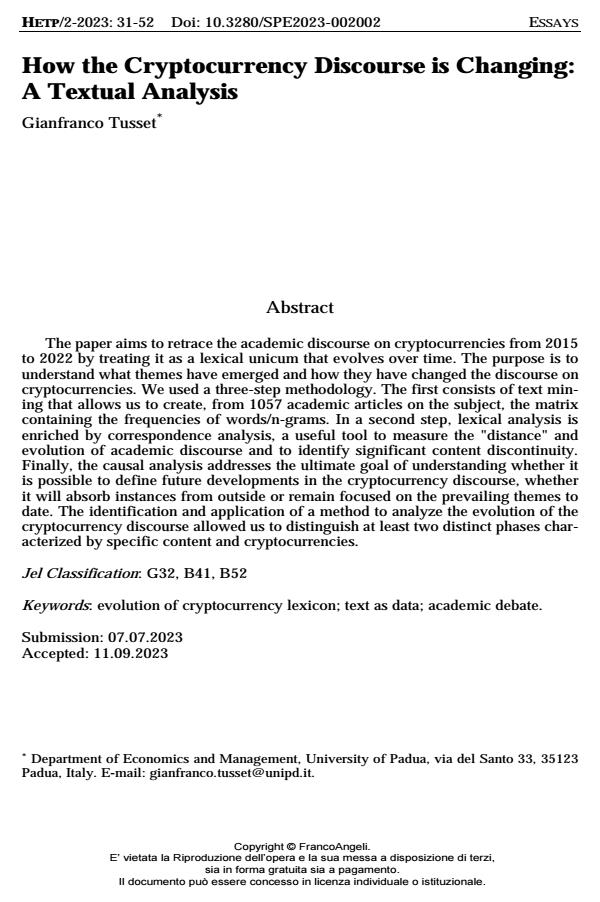How the Cryptocurrency Discourse is Changing: A Textual Analysis
Journal title HISTORY OF ECONOMIC THOUGHT AND POLICY
Author/s Gianfranco Tusset
Publishing Year 2024 Issue 2023/2
Language English Pages 22 P. 31-52 File size 201 KB
DOI 10.3280/SPE2023-002002
DOI is like a bar code for intellectual property: to have more infomation
click here
Below, you can see the article first page
If you want to buy this article in PDF format, you can do it, following the instructions to buy download credits

FrancoAngeli is member of Publishers International Linking Association, Inc (PILA), a not-for-profit association which run the CrossRef service enabling links to and from online scholarly content.
The paper aims to retrace the academic discourse on cryptocurrencies from 2015 to 2022 by treating it as a lexical unicum that evolves over time. The purpose is to understand what themes have emerged and how they have changed the discourse on cryptocurrencies. We used a three-step methodology. The first consists of text mining that allows us to create, from 1057 academic articles on the subject, the matrix containing the frequencies of words/n-grams. In a second step, lexical analysis is enriched by correspondence analysis, a useful tool to measure the "distance" and evolution of academic discourse and to identify significant content discontinuity. Finally, the causal analysis addresses the ultimate goal of understanding whether it is possible to define future developments in the cryptocurrency discourse, whether it will absorb instances from outside or remain focused on the prevailing themes to date. The identification and application of a method to analyze the evolution of the cryptocurrency discourse allowed us to distinguish at least two distinct phases characterized by specific content and cryptocurrencies.
Keywords: evolution of cryptocurrency lexicon; text as data; academic debate.
Jel codes: G32, B41, B52
- Bitcoin, Altcoins, Digital Ruble: On the Economic Nature of Cryptocurrencies О. N. Volkova, in Finance: Theory and Practice /2025 pp.21
DOI: 10.26794/2587-5671-2025-29-5-21-33
Gianfranco Tusset, How the Cryptocurrency Discourse is Changing: A Textual Analysis in "HISTORY OF ECONOMIC THOUGHT AND POLICY" 2/2023, pp 31-52, DOI: 10.3280/SPE2023-002002